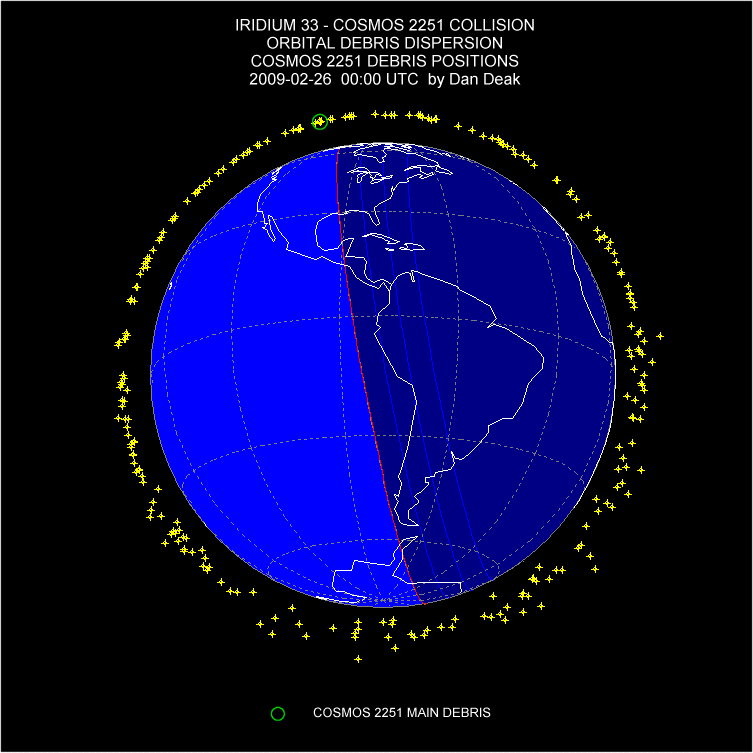<p><BR/>Replying to:<BR/><DIV CLASS='Discussion_PostQuote'>I should've chosen a wider height range when I listed all the operational satellites at risk. And I thought I was being a little bold.I also want to point out that the paths of the Kosmos and the Iridium debris will continue to cross one another perfectly, in crossing polar orbits, The debris from one can collide with oncoming debris from the other, generating even more orbiting debris. Thus begins possibly the most likely chain reaction, producing more and more debris until the debris remaining is too small to shatter further. This growth in the number of debris pieces will be an exponential growth, slow at first, but increasing according to a power law, until all the larger pieces (perhaps marble size or greater) are consumed, and as the debris cloud becomes increasingly dispersed.Just wonderful. And Iridium has never bothered to even make an orbital correction to date, despite receiving about 5 "conjunction reports" every week. <br />Posted by petet</DIV><br /><br />Well, in the past, the 5 "conjunction reports a week" have proved to be false alarms. If you expend all your propellant (5x per week x 50 weeks per year = 250 a year) on false alarms, you will have none left in a short time. So if a guarantted one is predicted, you willbe out of fuel. </p><p>As was stated (I believe I copied it in this thread), the conjunction report for this event was nowhere near the closest ever; it's just that this one happened.</p><p>If the lifetime of your satellite is weeks instead of years because you respond to every false alarm, then there's no point to even bother to launch it.</p><p> </p> <div class="Discussion_UserSignature"> <p><font color="#000080"><em><font color="#000000">But the Krell forgot one thing John. Monsters. Monsters from the Id.</font></em> </font></p><p><font color="#000080">I really, really, really, really miss the "first unread post" function</font><font color="#000080"> </font></p> </div>
 </p> <div class="Discussion_UserSignature"> <h1 style="margin:0pt;font-size:12px">----------------------------------------------------- </h1><p><font color="#800000"><em>Lady Nancy Astor: "Winston, if you were my husband, I'd poison your tea."<br />Churchill: "Nancy, if you were my wife, I'd drink it."</em></font></p><p><font color="#0000ff"><strong>Website / forums </strong></font></p> </div>
</p> <div class="Discussion_UserSignature"> <h1 style="margin:0pt;font-size:12px">----------------------------------------------------- </h1><p><font color="#800000"><em>Lady Nancy Astor: "Winston, if you were my husband, I'd poison your tea."<br />Churchill: "Nancy, if you were my wife, I'd drink it."</em></font></p><p><font color="#0000ff"><strong>Website / forums </strong></font></p> </div>




